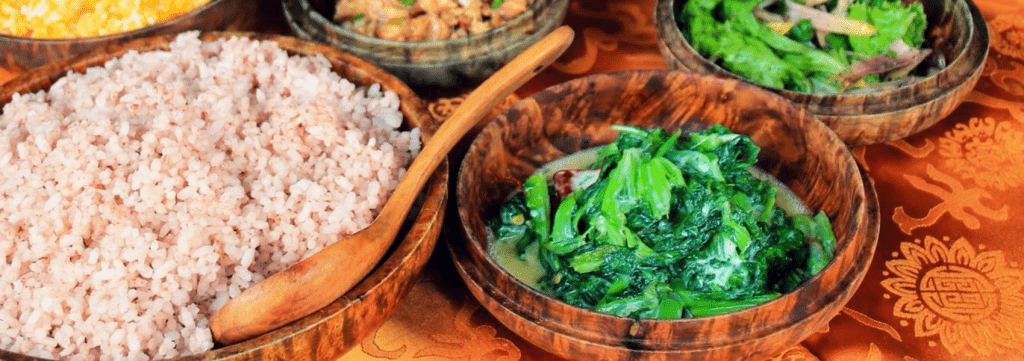Bhutanese Red Rice – Nutty & Earthy
The Bhutanese staple – red rice is rich in mineral content because it has been grown for generations in the same manner at high altitudes and irrigated with glacial water. The minerals from the water help retain its complex, rich, nutty and earthy flavor.

Red rice has been the staple of the Bhutanese people, particularly those residing in western Bhutan, where it is abundantly grown.
Red Rice gets its color from the high content of anthocyanin and proanthocyanidins, plant pigments, which give some plants a red color. These pigments are said to be rich in antioxidants. Studies published in publications dedicated to Alter- native Medicine from research of proanthocyanidins on diabetic rats revealed that this compound reduces cholesterol and hyperglycemia in type-1 and type-2 diabetics. The high fiber content in red rice is also said to help regulate weight, clean the colon of toxins, soak up cholesterol and feed the good bacteria in the intestines.
Given its high iron and zinc content, it is said that Red Rice can boost your blood-forming iron and strengthen immunity. The iron contributes to the production of myoglobin and hemoglobin. Myoglobin and hemoglobin deliver oxygen to muscles and tissues, keeping your energy levels high. Iron is also useful in boosting cell growth.
Bhutanese red rice is rich in carbohydrates and dietary fiber, which can take more than two hours for your body to digest, providing a prolonged sense of fullness. A diet rich in dietary fiber also promotes a healthy digestive system and lowers your risk of heart disease and other obesity related conditions.
The rice does not contain fat or cholesterol, which makes it a heart-healthy addition to your plate. Nutritionists says diets low in fat help prevent clogged arteries and aid in weight maintenance. With each serving of Bhutanese rice, you consume two percent of your recommended daily allotment for iron, 80 percent for manganese, 20 percent for magnesium, 20 percent for phosphorus, 35 percent for molybdenum and six percent for zinc.
It is also a good food source for people with Celiac disease who are allergic to wheat. Natives usually eat red rice daily with vegetables or meat cooked as curries. They sometimes also make a porridge called Thuep made from the red rice by adding meat and chunks of dried cheese in it.

